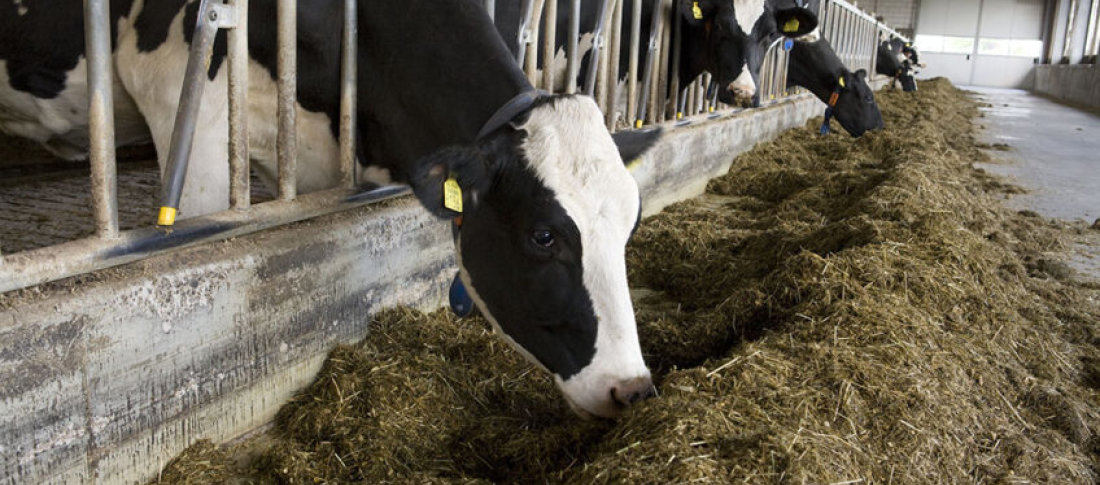Everything you need to know about mitigating methane emissions
30 September 2022
The subject of methane (CH4) production has been at the forefront of scientific thought for decades - with ruminant production at the centre of the discussion.
So, what can we do within the dairy industry to mitigate CH4 production?
We’ve caught up with Dr. Sophie Parker-Norman, Head of R&D and Technical at Volac International, to find out more about the science surrounding CH4 production and how we can manage its production through nutrition.
A look inside the rumen
Acquiring a greater understanding of rumen function has been critical to addressing the challenge of CH4 mitigation. A biological enigma – the microbial population of the rumen comprises bacteria, protozoa, fungi and archaea. It is so specialised that some species (rumen protozoa) have evolved side-by-side with the cow.
To put into context the vastness of this microbial population, the rumen has a capacity of approximately 180 litres and contains over 20 billion microbes in 1 teaspoon of rumen fluid.
While there is still a lot we don’t know about its activity, we do know that this microbial population rapidly digests complex plant material via anaerobic degradation to produce energy for both the microbes and the host cow. This power duo of the cow and the rumen microbes, is particularly effective in countries such as the UK where 65% of the land is only suitable for growing grass. Land utilisation, with the help of ruminants, allows for the conversion of grassland into a source of human protein nutrition.
Why the emphasis on emissions?
While the environmental impact of CH4 emissions is a major concern due to its impact as a greenhouse warming gas – some 24 times more warming than carbon dioxide, there are further implications for the dairy farmer that should also be taken on board.
Accounting for between 2 and 12% of dietary energy loss, CH4 production could mean bigger losses of profitability due to poor utilisation of energy in the diet. A 10% energy loss for a Holstein equates to approximately a 5Kg reduction in milk production.
Over the next five years, we’ll see the advent of greater regulations relating to CH4 emissions. Stemming from a combination of consumer demand, processor policy and government regulation, it should be looked upon by all as an opportunity to improve production efficiency through a variety of approaches.
The vital ingredients
When it comes to reducing CH4 production, feed ingredients matter. Higher levels of fibre in the diet leads to great rumination and CH4 production. Reducing some of the fibre can have a big impact on CH4 production per cow. However, increasing the concentrate to forage ratio fed should be undertaken with caution in order to avoid ruminal acidosis. Instead, alternatives such as feed additives should be considered to help shift the fermentation pattern without negative consequences.
With an increased passage rate also a factor in reducing CH4 production, the selecting of ingredients to increase propionate production is closely linked. Typically, fibre will stay in the rumen for 30-40 hours, however by including a smaller pool of indigestible fibre in the diet, a quicker rate of passage can be achieved, with reduced fermentation and therefore less CH4 production. However, quicker passage rates mean that rumen microbes have a greater energy requirement in order to meet an increased division rate to maintain population numbers, so caution in this approach is also advised.
Feeding quality forage
By improving feed efficiency through feeding good quality forage, it is possible to make notable reductions in CH4 production per kg of milk. Key factors to consider include maturity at harvest – with younger material generally yielding better quality, as well as good ensiling and storage to maximise the conservation of nutrients.
Factoring in the benefits of feed additives
The last 10 years have seen a huge development in the mitigation of CH4 through feed additives such as garlic extracts, essential oils, compounds isolated from seaweed and the synthetic 3-nitrooxypropanol. Undoubtedly, these will become widely available in the future to be used as part of a nutritional strategy to reduce CH4.
Dr. Parker-Norman says: “In my opinion, the success factor to selecting such additives will be to aim for both CH4 reduction as well as improved production. Together these objectives will make the incorporation of additives much easier while maintaining income over feed cost. These goal posts of course, will be determined by regulatory requirements from country to country.
The future of CH4 mitigation
To really drive the reduction in CH4 emissions forward over the next five years, it’s vital that we improve the efficiency of production. With this in mind, nutritionists will need to utilise CH4 emission predictions in feed formulation models in a bid to mitigate CH4.
Scientific advancements in our understanding of CH4 mitigation have provided the dairy industry with firm foundations from which to create successful applications. This will only continue to move forward as our understanding grows. This combination of science and applications in nutrition will take dairy production towards a sustainable and productive future.
The full story:
To hear Dr Sophie Parker-Norman’s full take on the matter of CH4 mitigation, click here.